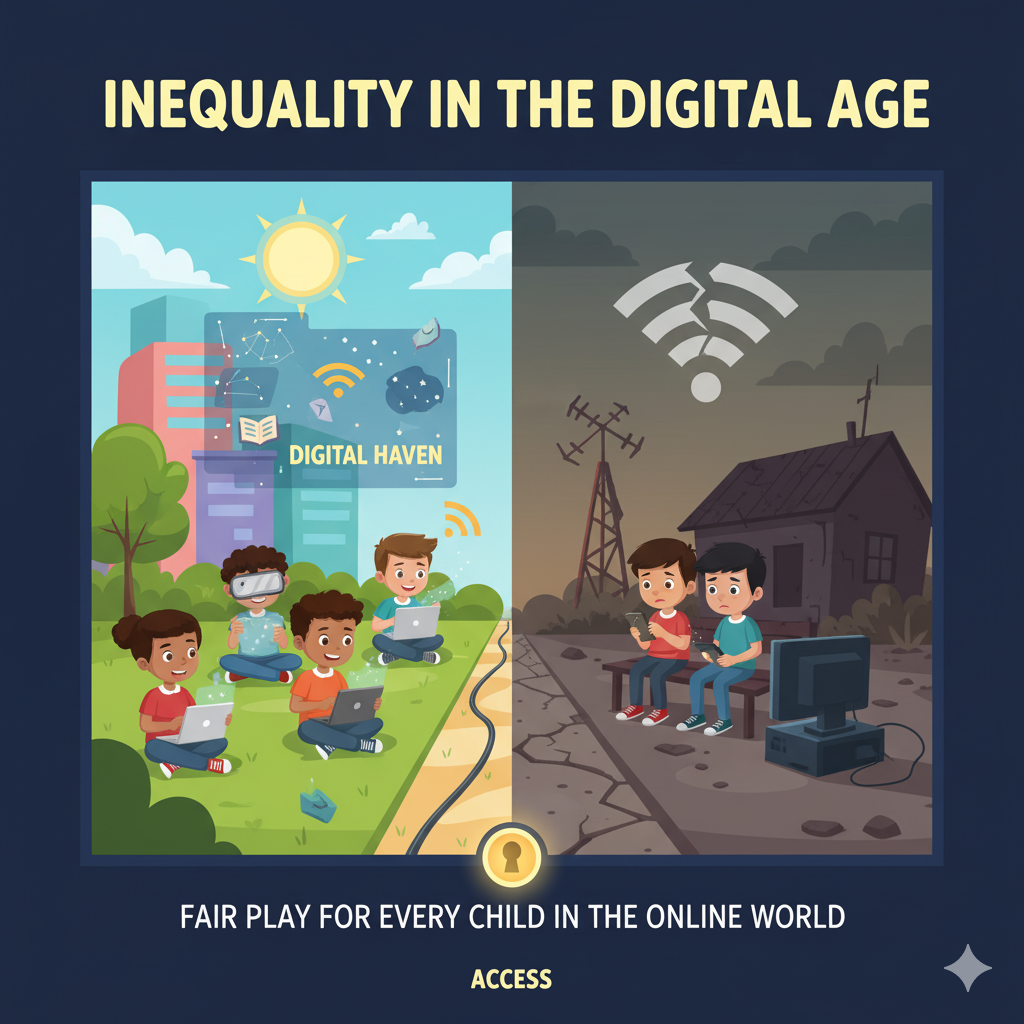Written by Yvonne Misando
Tablets, phones, laptops, TVs… everywhere you look, screens are part of our lives. We use them to learn, play, talk to friends, and watch shows. This is the digital age, a time when technology helps us do almost everything.
But not everyone enjoys it equally. Imagine everyone in your class wants to play a new game, but some have super-fast computers while others have old, slow devices, or none at all. That’s what inequality in the digital age looks like.Think about it, some children have fast internet at home and their own tablet or computer. They can easily do their homework online, watch educational videos, learn coding games, or video chat with family far away.
They’re like the kids with the super-fast computers in our game example. But in other families, maybe there’s no internet at all, or only one very old phone that everyone has to share. Or perhaps their school doesn’t have enough computers, or the internet connection is too slow to load lessons. These children are like the ones who can’t play the game, or can only play it very slowly. They miss out on learning important things that could help them in school and when they grow up. It’s like having a treasure map but no flashlight to find the treasure.
This means children who already have more keep learning and advancing, while those without digital access fall further behind. It’s unfair, every child deserves a chance to learn and connect. Technology is no longer a luxury; it’s essential for education and the future.
We saw this clearly at the Learners EdTech Summit 2025 at Milele Hotel, Nairobi, organized by Mtoto News and EdTech East Africa. Children shared that they lack access to digital tools for many reasons, poor internet coverage, poverty, poor infrastructure, and lack of digital skills. These gaps leave many children excluded from opportunities to learn and grow.
Yet, children also offered smart solutions. They asked for offline learning apps for rural areas, safe online spaces to fight cyberbullying, and assistive technologies like screen readers and captioned videos for children with disabilities. Some even linked tech to climate justice, proposing a “Tree Track” app to monitor tree planting.
Their ideas are not dreams, they are practical answers to real challenges. If children already know what the future of education should look like, why are adults still dragging their feet? The true meaning of EdTech is creating equal opportunities so every child can learn, grow, and thrive in this digital world.

